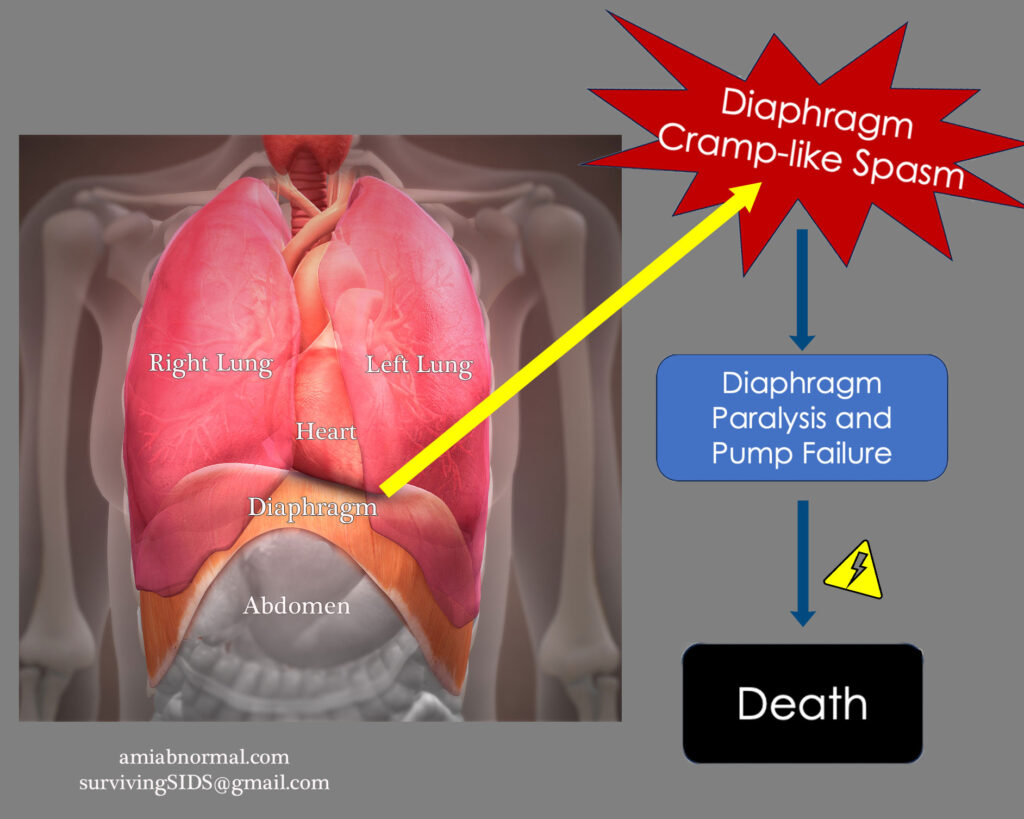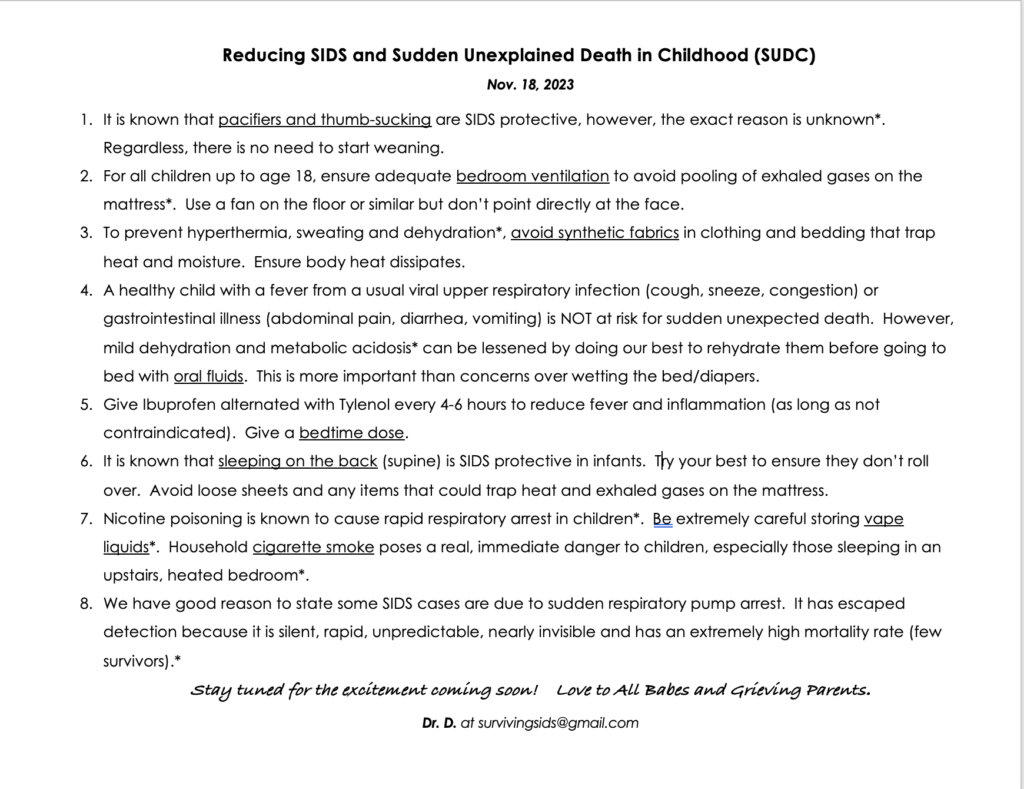
SIDS Discovery 2024 – Inadvertently made by a practicing doctor in Toronto, Canada on Friday October 28th, 2022. It all started with a 7-year-old boy who recalled 45 years after the fact, recurrent life-threatening breathing emergencies that had awakened him sporadically throughout his childhood and youth.
The story is incredible. It continues to unfold at its own pace. It will take time to prove its validity.
I am his doctor, advocate, researcher and author. I am also… him.
Adverse childhood experiences (ACEs) and grief need to be explored in all children and adults. It can present in seemingly unrelated ways like delayed speech or language problems. The sooner the better. Even greater things await, beyond this SIDS discovery!
Here’s the manuscript to read or download. Please share with SIDS researchers.
Diaphragm Cramp-like Contracture (DCC) as a SIDS Mechanism
Diaphragm cramp-like contracture, or DCC, is our name for our pediatric patient’s concerning nighttime symptoms: a painful bearhug with gasping and complete inability to inhale. We are proposing that sudden respiratory arrest (apnea) by diaphragm failure is responsible – a valid SIDS mechanism. It is supported extensively by the scientific literature. [An in-depth literature review was done by the primary author, Dr. Darryl (Dov) Jordan Gebien MD, MSc.]
So why is this nighttime child killer unknown to medicine? DCC is:
- Silent, as the victim is unable to breathe in and cry for help.
- Rapid, unpredictable and comes on suddenly, making it difficult to observe.
- Masquerades as a seizure, choking or cardiac arrest.
- Sudden respiratory arrest is difficult to recognize, even by a medical professional.
- Apnea monitors (those at home, and even in hospital) can actually miss respiratory arrests. Most monitor respiratory movements as opposed to true apnea.
- Home SIDS monitors miss the crucial event (respiratory arrest) and alarm much later, giving less time before cardiac arrest ensues.
- Nearly invisible, as the diaphragm is an internal organ.
- Few signs remain at autopsy. However, contraction band necrosis has been documented in systematic diaphragm histological studies.
- Autopsies do not routinely assess the diaphragm in sudden unexpected deaths, including SIDS, SUDC (sudden unexplained deaths in childhood) and SCD (sudden cardiac deaths in adults).
- Inexplicably and despite compelling evidence, modern medicine has cast a blind eye to the diaphragm as being responsible for serious disease.
SIDS Safety Tips by a Practicing Medical Doctor. “Reducing SIDS and Sudden Unexplained Death in Childhood (SUDC)” handout. After over a year of intensive SIDS research, I’ve put this together to reduce sudden unexpected deaths in children.
Download, save, share.
Sleeping children need our help

